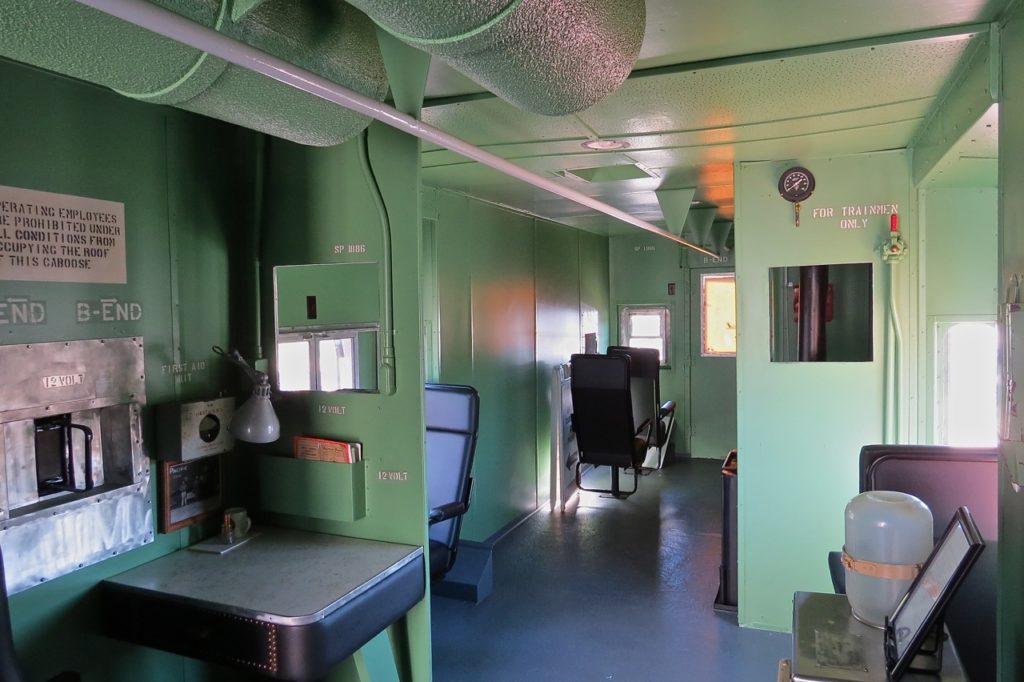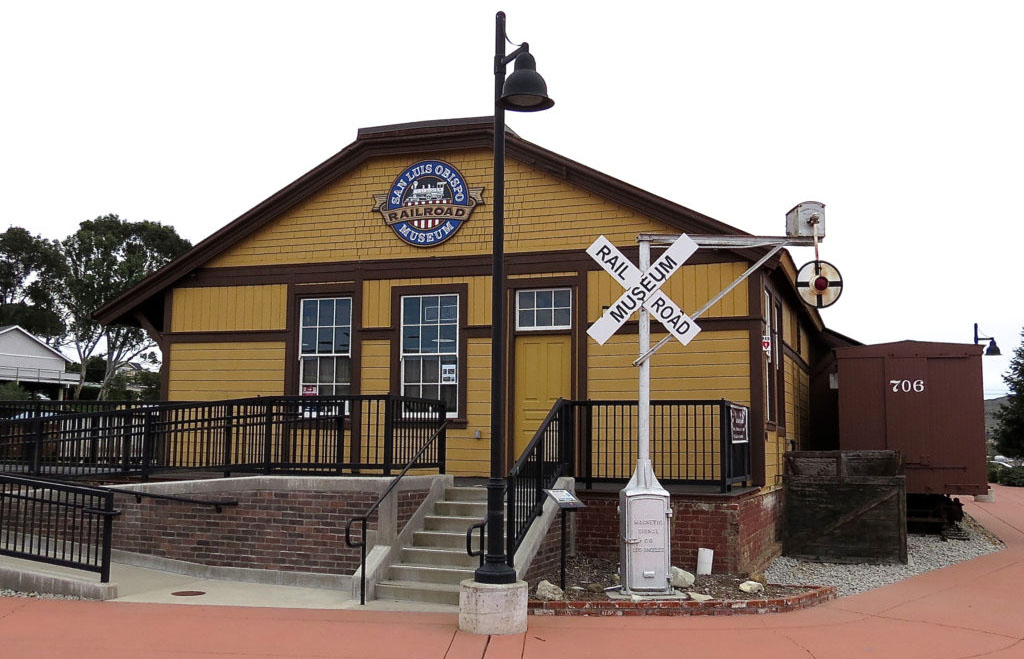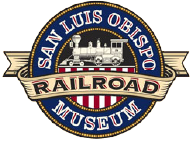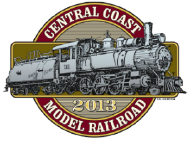
— About —
Our Story
Our Story
We are over 200 members and about 40 active volunteers. In 2021 we celebrated 30 years since founding the Museum. In that time we have renovated an historic building and acquired, restored, and exhibited many artifacts, ranging from hand tools to railcars. We welcome visitors and volunteers of all ages, interests, backgrounds, and abilities.
We provide tours and presentations outside our usual public hours and at other locations by arrangement.
We publish our Annual Report in the Spring edition of our quarterly newsletter, the Coast Mail.


Southern Pacific
1894 Freighthouse
The Museum occupies the former Southern Pacific Freighthouse, built in 1894 when Southern Pacific’s southward extension from San Francisco and San Jose reached San Luis Obispo. From the mid-1800s through the 1950s, nearly every city had a freighthouse for each railroad that served the area. It was a place where long-distance, less-than-carload shipments were sent and received by rail, with local movement by horse-drawn wagons in the early days, and later by motor trucks.
In the mid-1990s, the Southern Pacific Railroad was disposing of unused property, while also being acquired by Union Pacific Railroad. The City of San Luis Obispo acquired the freight house and adjacent land. The city intended to remove the old building and create additional parking for Amtrak patrons. Members of the Avila Valley Railway Museum persuaded the city to save the building and to support grant funding that would enable the seismic safety, fire safety, and universal access features required for public use. Restoration work began in 2000. The original floor, walls, and roof trusses of this locally designated historic structure were preserved.
The Freighthouse reopened to the public as our museum in fall 2013. Until then, much of the Museum’s collections of artifacts and documents had been stored at members’ homes and at business sites in the area. In addition to creating indoor displays, the Museum replaced the previously removed house track on the east side of the Freighthouse with its display track. Volunteers built the display track using materials salvaged from the spur that ran from north of the city to U.S. Army Camp San Luis Obispo, now in part home to California Men’s Colony state prison. The display track is not connected to the active Union Pacific Railroad tracks, so all rolling stock is brought in by highway truck. A shorter, narrow-gauge display track on the west side of the building, also built by volunteers, holds two wood-frame boxcars, one converted to restrooms accessible from inside the Freighthouse.
The original San Luis Obispo Freighthouse north side platform was unusual in being served on one side by the Southern Pacific Railroad and on the other side by the narrow-gauge Pacific Coast Railway. This north side platform was removed by the Southern Pacific Railroad decades ago.
Museum Organization History
The Museum was originally incorporated as the Avila Valley Railway Museum in February 1991. The founding members were Evelyn Delany, Donald Grant, Mark Hall-Patton, Arnold Hoffman, Dan Krieger, Brad LaRose, Walter Rice, Marco Rizzo, and Mary Rossi. Initially, the organization focused on preserving artifacts from the narrow-gauge Pacific Coast Railway. The Museum planned to develop a facility and operating track along that line’s former right-of-way near Avila. That did not occur.
In the mid-1990s, the original standard-gauge railroad in the region, Southern Pacific, was disposing of unused property, while also being acquired by Union Pacific Railroad. The City of San Luis Obispo acquired the 1894 SP freight house and members of the Avila Valley Railway Museum persuaded the city to save the building and to support grant funding that would enable the seismic safety, fire safety, and universal access features required for public use. Work began in 2000. Reflecting an expanding scope, the name changed to San Luis Obispo Railroad Museum in May 2005.
Museum displays and collections cover the Pacific Coast Railway, the San Luis Obispo Street Railway, Southern Pacific Railroad, Union Pacific Railroad, Amtrak, Santa Maria Valley Railroad, and other minor rail operations in the region. In addition to full size artifacts, the Museum contains an authentic 1/87-scale model railroad, built and operated by the Central Coast Model Railroaders.
With city approval in 2005, the Museum developed and continues to use a storage and work area occupying the northern end of Emily Street right-of-way that had not been improved as a street.
The Museum substantially amended its Bylaws in 2016. It adopted its first Strategic Plan in 2015, replaced by its Development & Operations Plan in 2016 (last amended in 2021).
The most recent major development was installation of a 5.9 kW, ground-mounted photovoltaic system on city-owned land west of the Freighthouse, in fall 2020.
During 2020 and part of 2021 the Covid-19 pandemic drastically reduced attendance, revenues, and in-person special events. However, the Museum continued to pursue grant funding and development of additional indoor and outdoor displays.

